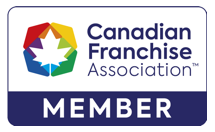Disputes over a deceased’s estate usually involve unhappy family members who are dissatisfied with what they inherited. This is certainly nothing new. However, what has changed more recently is the added complications that arise in estates involving blended families, where a spouse has remarried or entered into a new common law relationship. According to the 2011 census, stepfamilies now comprise 12.6% of Canadian families. There is a unique distinction between disputes in blood-related families and those that arise in blended families. In blood-related families, the interests are generally well-aligned. The grievances tend to be based on personality conflicts or family history. Disputes will usually arise because of unexpected terms in the Will or the breakdown of relationships after the death. In disputes related to blended families however, the tension between the children in a first marriage and the step-parent and children of the subsequent marriage arises more naturally from the start of the relationship and carries on after death.
This tension can become magnified after death causing undue stress for a person’s survivors. A testator in a blended family can take steps to minimize the fighting that might occur as a result of how the estate is divided. One way to minimize or avoid disputes it to prepare a Estate Planning Agreement between the spouses.This Agreement would specify each party’s respective rights and obligations upon death. It can contain the typical provisions found in a domestic contract such as full financial disclosure, provisions to deal with assets and debts, and the requirement to obtain independent legal advice. It can also specify how property should be disposed of, which is important in Ontario where common law spouses have no statutory rights to property upon death.Having such an Agreement can also help ease the concerns of how the children will be provided for, ensuring that their inheritance will not be controlled by a person who the child may not necessarily be involved with in the future. The Agreement can be structured to address any potential tax issues, make administration of the estate easier and minimize anticipated areas of conflict.The Agreement should be part of a holistic estate plan that integrates with the other standard testamentary documents. Wills and powers of attorney should be drafted to ensure they are consistent with the Agreement. Beneficiary designations in insurance policies or registered investment plans may need to be changed.Estate planning for a subsequent marriage is likely to complex. Just how complex it is will depend in large part on the family dynamic. The typical estate plan in most first families is to leave everything to the spouse and to the children once both parents have passed away. This type of strategy likely won’t be a good fit for a blended family. As a result, people with blended families will want to take some time to think through with their spouse just exactly how they want their assets to be divided.

 2 St Clair Ave West
2 St Clair Ave West


